Execution Context
What is Execution context in JavaScript?
Did you know know what happens when you execute a JavaScript code?
Spoiler alert! An execution context is created.
Want to know more? lets dive in.
Let me take an example of JavaScript code:
let x = 5;
function double(a) {
return a * 2;
}
let y = double(x);
console.log(y); // 10
So, the code is very straightforward. However, behind the scene, a lot of things are happening.
When the javascript engine executes a script, it creates an execution context. Each execution context has two phases: The creation phase (also known as the memory creating phase) and the execution phase (also known as the code exection phase).
Creation Phase
Creation phase: When the code executed for the first time, the JavaScript engine creates a global execution context.
During this phase the following tasks are being performed by the JavaScript engine:
- In the case of a web browser, a global object
windowis created. And incase the Node.js environmentglobalobject is created. - Creates
thisobject which points to the global object above. - Setup a memory heap for storing variables and function references.
- Store the function declaration in the memory heap and variables within the global execution context with the initial value as
undefined.
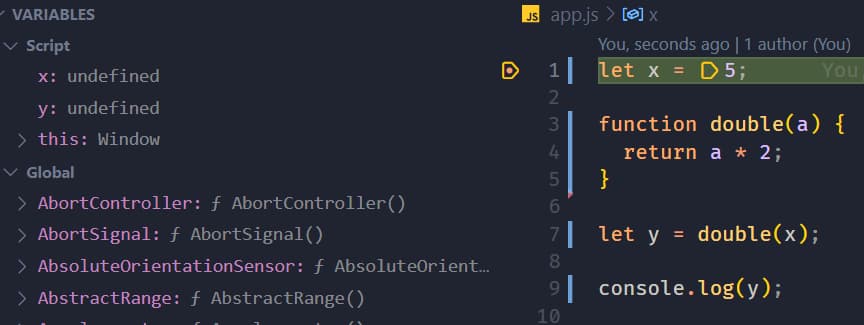
In our example, during the memory creating phase, the Javascript engine stores the variable x and y and the function declaration double() in the global execution context. Meanwhile, it initializes the variables x and y to undefined.
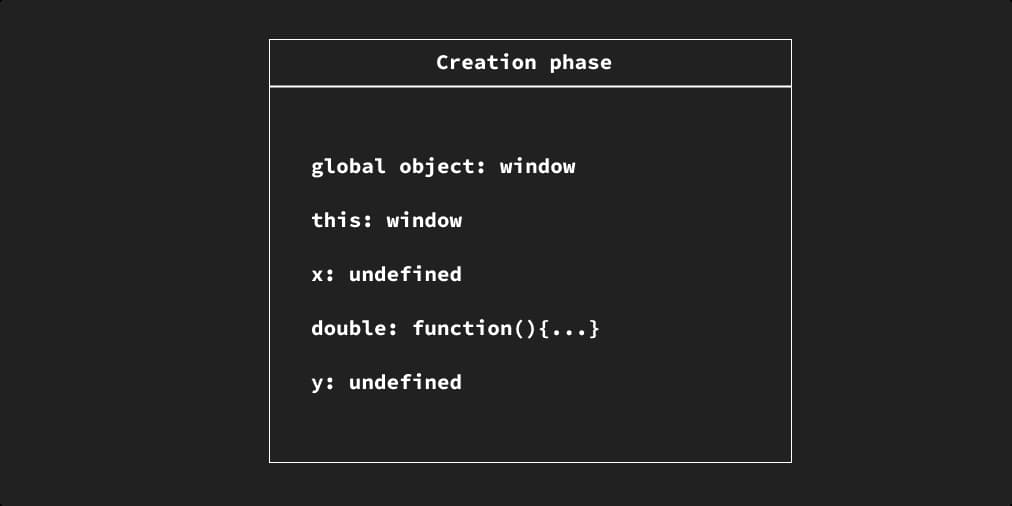
After the creation phase, the Global execution context moves to the code execution phase.
Execution Phase
Execution phase: During this phase, the javascript engine started to execute the code line by line. Meanwhile, the javascript engine assign values to the variables and executes the function calls.
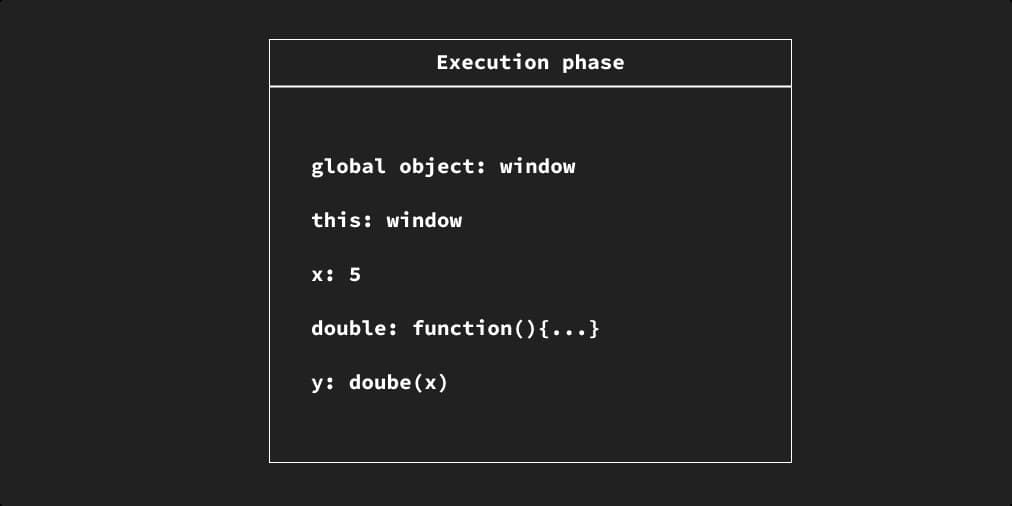
For every function call, the JavaScript engine creates a new function execution context. The function execution context is similar to the global execution context, but instead of creating the global object, it creates the arguments object that contains a reference to all the parameters passed into the function.
In our example, the function execution context creates the arguments object that references all the parameters passed into the function.
Sets this value to the global object and initializes the a parameter to undefined.
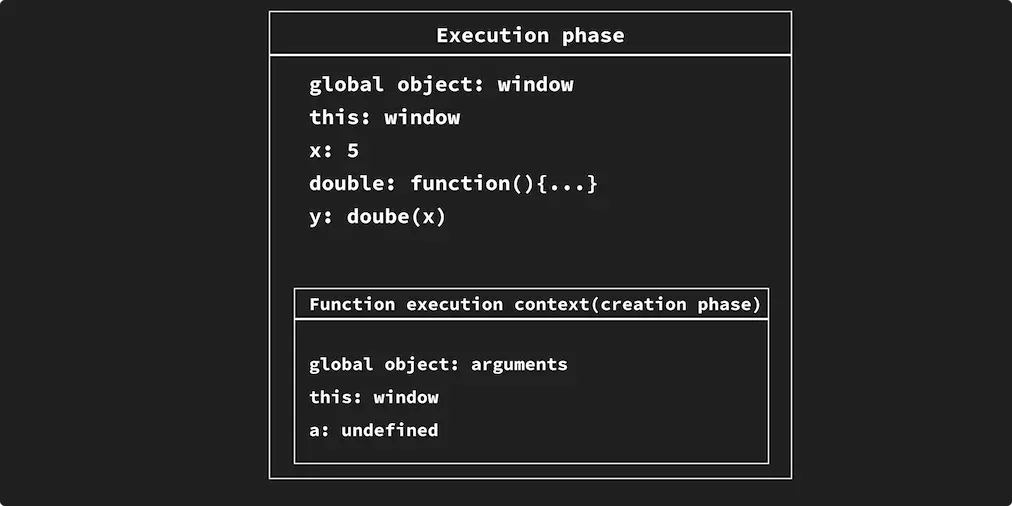
During the execution phase of the function execution context, it assigns 5 to parameter a and returns the result 10 to the global execution context.
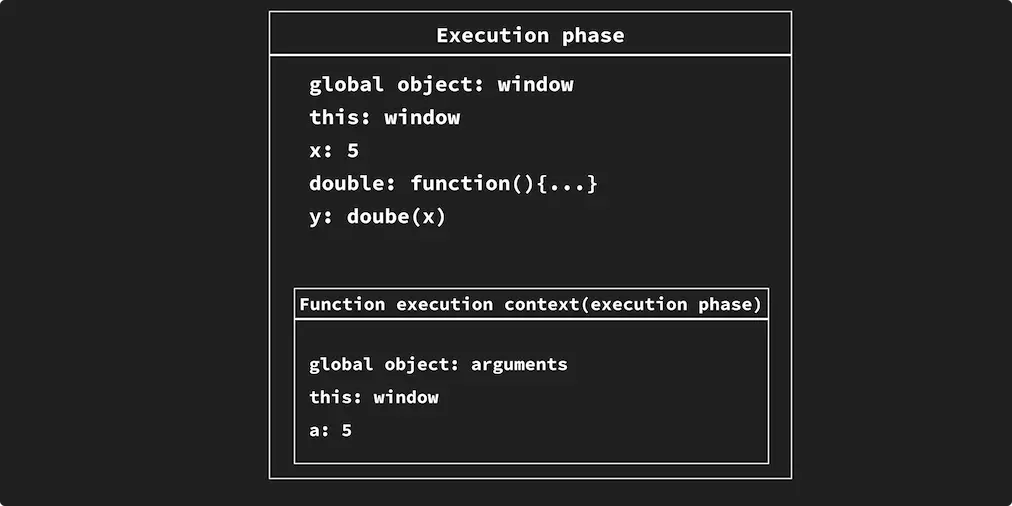
Once the function execution context finishes its job, the global execution context now should look like this:
A data structure named stack is used to keep track of the function execution context as well as the global execution context. This is known as the call stack.